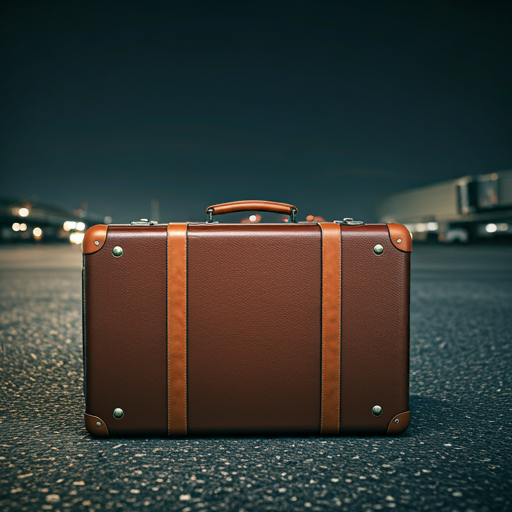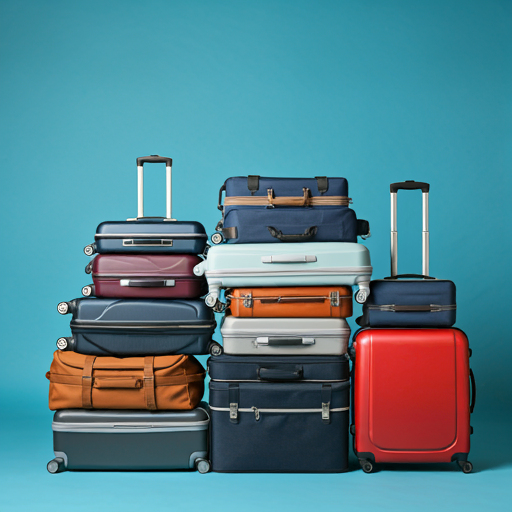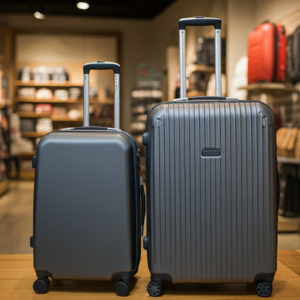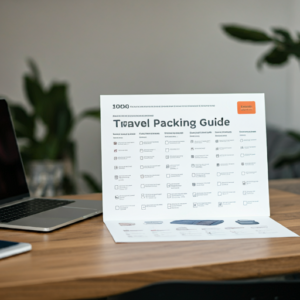When shopping for bags, whether it’s a stylish shoulder bag, a handbag, a convenient crossbody, a functional poly bag, or a chic handbag, understanding accurate bag measurements can make a huge difference in your selection process. Correct sizing ensures comfort, functionality, and aesthetic appeal. Here’s a comprehensive guide to measuring bags accurately to match your needs, style, and the occasion.
Table of Contents
Understanding Bag Types and Bag Measurements
Each bag of box type serves a unique purpose, so it’s essential to understand their specific characteristics and ideal uses:
Shoulder Bags: These versatile bags are typically carried over one shoulder with an adjustable strap, giving you the freedom to customize their drop length for comfort and style. Perfect for daily use, shoulder bags provide ample space for essentials and often come with multiple compartments.
Crossbody Bags: Known for their hands-free convenience, crossbody bags feature longer straps that go over one shoulder and across your body, making them perfect for busy days or traveling. Adjusting the strap length ensures it sits comfortably against your hip for easy access.
Poly Bags: Unlike fashion bags, poly bags are used for packaging and storage. Made from plastic, they are designed to protect contents from moisture and dust, making them ideal for shipping and storage.

To select the right bag, understand these basic dimensions:
Length, Width, and Depth: These measurements ensure the bag can accommodate your belongings and still fit comfortably against your body. When measuring the width of a handbag, be sure to consider the opening at the top, as it determines the space available for accessing the bag’s contents.
Drop Length: The distance from the top edge of the bag to where it naturally falls when worn, which is essential for shoulder and crossbody bags.
Handle Drop: The measurement from the top of the handle to the top edge of the bag, which affects how comfortably you can carry the bag.
Strap Length: This determines how the bag will sit on your body, impacting both comfort and accessibility.
It’s worth noting that bag sizes can vary significantly between brands. A “medium” bag from one brand may be a “large” in another, for example, so always check each vendor’s glossary to ensure you’re getting the right size. Referring to vendor size charts prevents the inconvenience of returns or exchanges and helps you choose a bag that suits your needs perfectly.

Measuring and Fitting Your Bag
To get precise bag dimensions, you’ll need a measuring tape and a few simple guidelines:
Measuring Length, Width, and Depth:
Ensure the bag is empty and laid flat.
Measure the bag’s length, width, and depth from the longest points. For instance, if the bag has a structured base, measure across its base for width and depth.
These measurements help you understand the bag’s carrying capacity and how it complements your body’s proportions. A bag too large may be cumbersome, while one too small might not fit all your essentials.
Finding the Right Drop Length and Strap Length:
For Shoulder Bags: Adjust the drop length so the bag sits comfortably around mid-waist. This position provides ease of access while keeping the bag close for security.
For Crossbody Bags: Aim to have the bag rest at your hip, positioned evenly from the shoulder to the hip. Adjust the strap length for a snug fit that doesn’t restrict movement.
Fitting for Poly Bags:
Choose a size that fits snugly around the contents for protection and efficiency. Whether you’re packing items for shipping or storing, a properly sized poly bag prevents shifting and potential damage.
These measurements are vital for ensuring that your bag fits well, is comfortable, and complements your body type.

Tips for Accurate Measurements
Accurate bag measurements are crucial for ensuring the perfect fit and functionality. Here are some essential tips to help you measure your bags precisely:
Use a Flexible Measuring Tape: A flexible measuring tape is indispensable for capturing accurate dimensions, especially when dealing with curved or irregularly shaped bags. Its flexibility allows it to contour to the bag’s shape, providing precise measurements.
Measure on a Flat Surface: Always place your bag on a flat surface before measuring. This helps eliminate any wrinkles or creases that could distort the measurements, ensuring you get the most accurate dimensions.
Measure Length from Top Edge: When measuring the length of your bag, start from the top edge and measure down to the bottom edge. This ensures you capture the full vertical dimension of the bag.
Measure Width at Longest Points: To measure the width, identify the longest points of the bag, typically from side to side. This gives you the most comprehensive width measurement.
Measure Depth Carefully: Depth can be tricky, especially with bags that have irregular shapes. Measure from the front to the back at the deepest point, and make sure to note any curves or bulges that might affect the measurement.
Take Multiple Measurements: For complex shapes, take multiple measurements to ensure accuracy. This helps account for any variations and provides a more precise overall dimension.
Use a Ruler or Straightedge: A ruler or straightedge can help guide your measuring tape, ensuring straight and accurate measurements, especially for bags with structured edges.
Note Any Irregularities: Make a note of any unusual features or irregularities in the bag’s shape that might affect the measurements. This information is crucial for understanding how the bag will fit and function.
By following these tips, you can ensure that your bag measurements are accurate, helping you select the perfect bag for any occasion.

Choosing the Right Bag Size for Your Needs
When selecting a bag, it’s important to consider what you’ll be carrying and determine the bag’s primary purpose:
Considering the Contents:
If you need a bag for specific contents, like a box or pallet cover, consider its shape and size. Measure the items you plan to carry, including any extra items that may be added, to make sure the bag’s capacity meets your needs.
Measuring the Width, Depth, and Height of Containers:
For a fitted poly bag, you’ll need precise measurements of the container’s width, depth, and height. Use a measuring tape to capture these dimensions accurately, noting any unusual shapes.
Add a Few Inches for Fitting: Adding 1-2 inches to the width and depth of a bag for containers allows some room for variation, making it easier to fit and seal without straining.
Bag Material and Thickness:
The type of material used can affect a bag’s durability. For instance, thicker poly bags offer better protection against tears and punctures, making them ideal for heavy or fragile items. Conversely, thinner bags may work well for lightweight items, reducing costs without sacrificing functionality.
Using Conversion Charts for Precision:
Especially for poly bags, knowing the thickness (in mils or millimeters) can be important for choosing the right durability. Conversion charts can help you switch between units, ensuring consistency and accuracy.
Common Measurement Mistakes to Avoid
Even with the best intentions, it’s easy to make mistakes when measuring bags. Here are some common pitfalls to watch out for, ensuring your measurements are as accurate as possible:
Not Using a Flexible Measuring Tape: A rigid measuring tape can lead to inaccurate measurements, especially on curved or irregularly shaped bags. Always use a flexible measuring tape to get precise dimensions.
Measuring on an Uneven Surface: An uneven surface can distort your measurements. Ensure you measure your bag on a flat surface to avoid any inaccuracies.
Not Measuring from the Top Edge: Starting from the wrong edge can result in incorrect length measurements. Always begin from the top edge of the bag to capture the full vertical dimension.
Not Measuring at Longest Points: Failing to measure at the longest points can lead to underestimating the bag’s width. Identify and measure the bag at its widest points for an accurate width measurement.
Not Accounting for Irregularities: Overlooking irregularities or unique features of the bag can skew your measurements. Make sure to note any unusual shapes or bulges that might affect the dimensions.
Not Taking Multiple Measurements: For bags with complex shapes, a single measurement might not be enough. Take multiple measurements to ensure you capture all dimensions accurately.
Using the Wrong Unit of Measurement: Mixing up units of measurement can lead to significant errors. Always double-check that you are using the correct unit, whether it’s inches, centimeters, or millimeters.
Not Double-Checking Measurements: It’s easy to make a mistake, so always double-check your measurements. This extra step can help catch any errors and ensure your measurements are accurate.
By avoiding these common mistakes, you can ensure that your bag measurements are precise, helping you choose the right bag for your needs.
Practical Tips for Bag Selection
With the many bag types and measurements to consider, here are some practical shopping tips to help you find the best bag for any occasion:
Personalize Your Drop Length and Strap Settings: Adjust the bag to your preference so it sits comfortably, and matches the look and feel you’re going for.
Check Vendor Sizing Consistency: Since sizing conventions vary by brand, always look at the vendor’s sizing chart, which can make a difference in the final fit.
Think of Your Usage Needs: For everyday bags like shoulder and crossbody, choose sizes that fit your essential items without excess bulk. For storage or transport, select poly bags that provide sufficient protection without unnecessary space.
Prioritize Comfort and Accessibility: The right bag should be easy to carry, fit comfortably, and allow you quick access to your items.
Conclusion
Accurately measuring and selecting bags can help you find the perfect size for every occasion, from fashion-forward accessories to practical storage solutions. By considering the specific dimensions and features of each bag type, you’ll ensure that your choice is both functional and stylish. Remember to adjust the straps of your bag for comfort, refer to sizing charts, and take precise measurements of the contents you plan to carry. These small steps will help you enjoy your bag to its fullest potential and avoid the hassle of mismatched sizes.
Whether you’re packing for a trip, preparing items for shipment, or simply looking for a stylish everyday bag, this guide is your go-to resource for making sure your bag fits your needs. With a little preparation and measurement, you’ll have a bag that perfectly complements your lifestyle.










